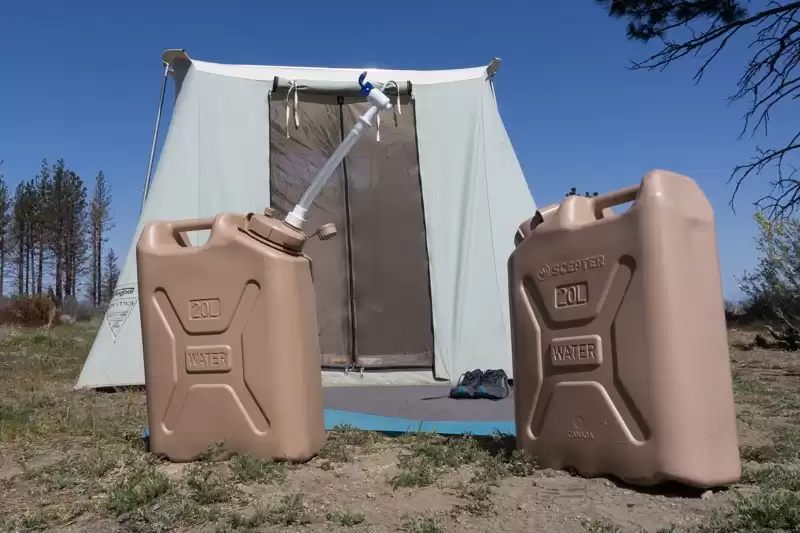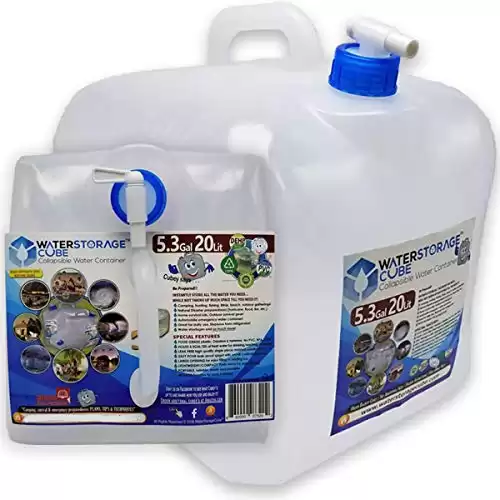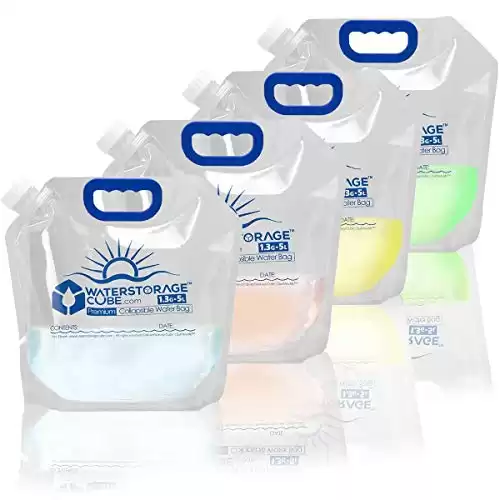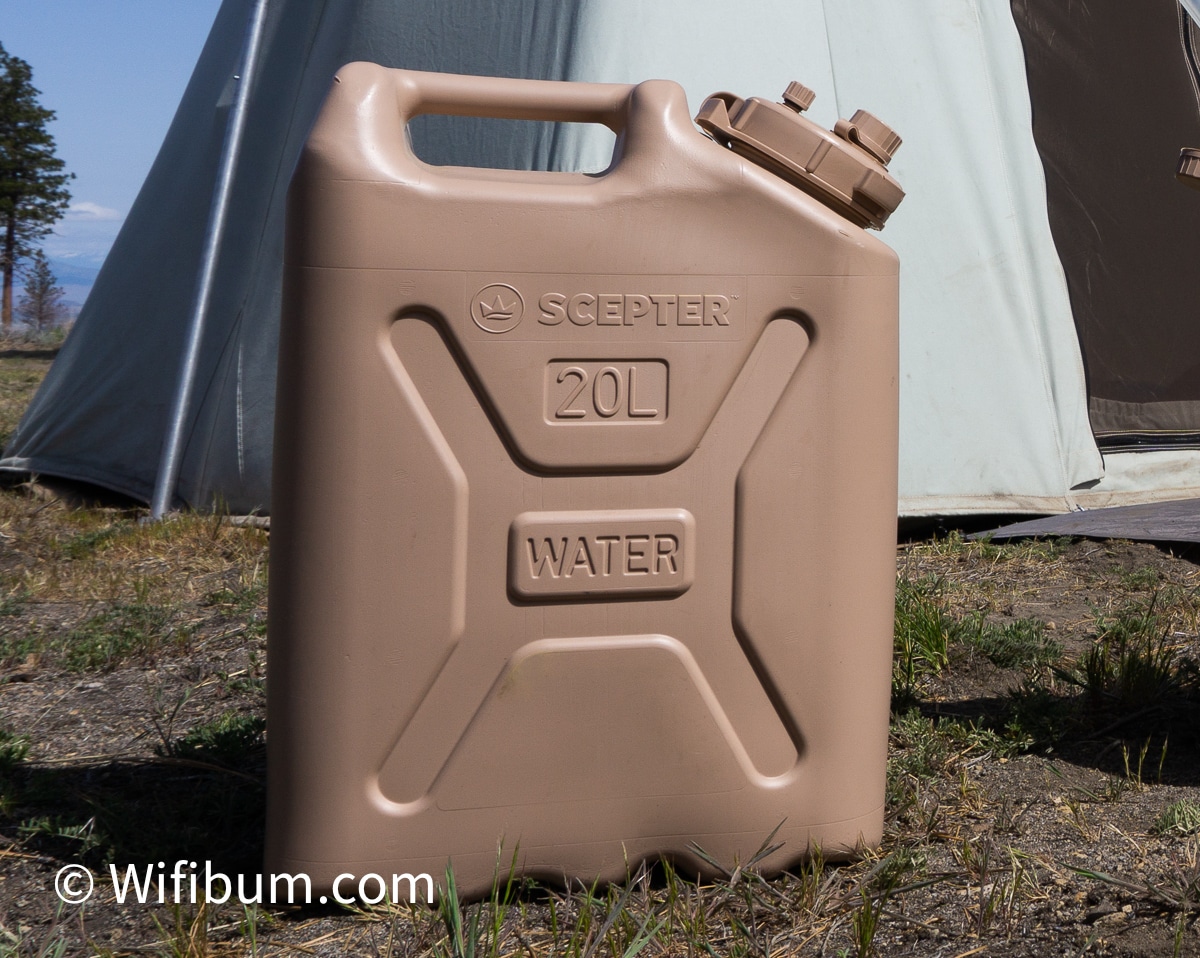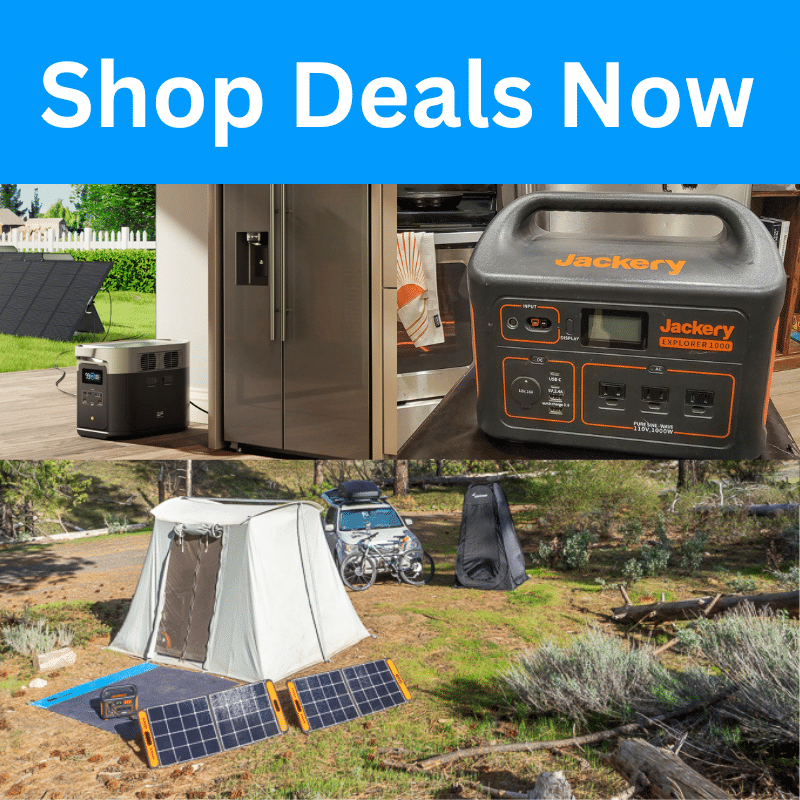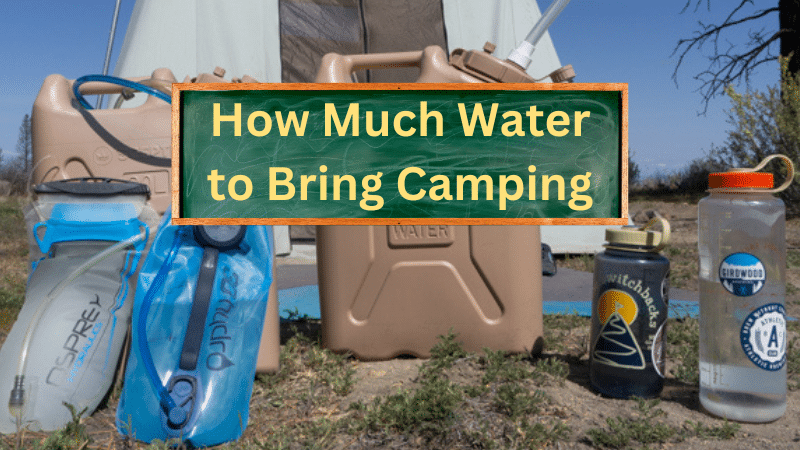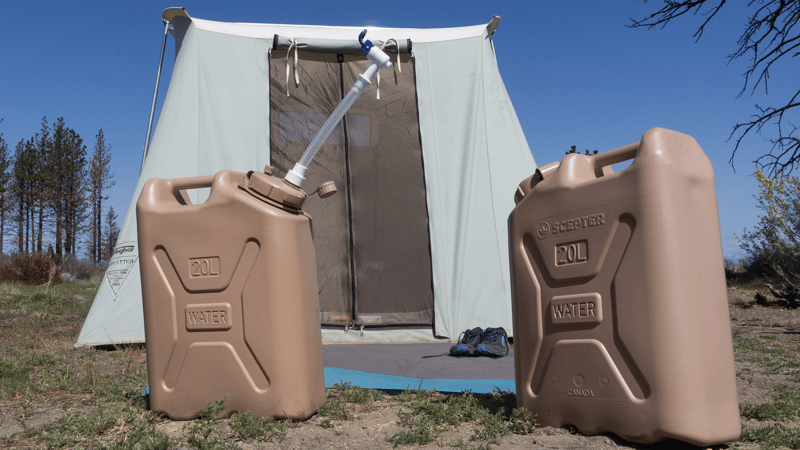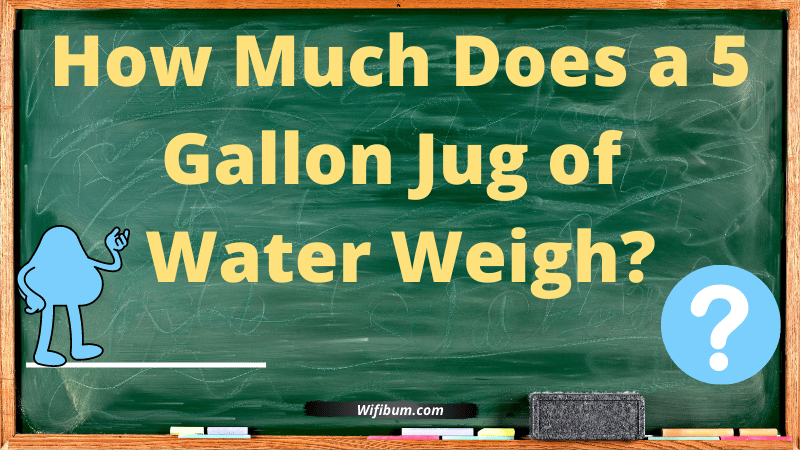The best water containers for camping will depend on the length and type of trip you are taking.
Having enough drinking water on a camping trip is fundamental to having a good time.
You may have seen friends storing water with those military-looking jerry cans, the classic aqua blue, the clear plastic collapsible containers, grocery store plastic bottles, and everything in between.
Find out which phase you are in later in the article!
Primary Rating: 5.0 | Primary Rating: 4.5 | Primary Rating: 4.5 |
$49.99 | $13.29 | $12.74 |
Links in this post may be affiliate links, where I earn a commission if you purchase on various marketplaces like Amazon, Etsy, and more. I DO NOT accept free gear or discounts. All opinions are my own.
What’s The Best Water Container For Camping?
The best water container for camping is the Scepter water can available in 2.5 and 5-gallon containers.
I use two of these on most trips along with a few Nalgenes. It typically will last me up to 8 to 10 days for one person.
It’s durable and versatile, with a company dedicated to custom modifications (self-venting spigots, pressurizing for showers, etc.).
Another benefit is it’s one of the few water cans you can easily clean by hand scrubbing. This is very important if you want your container to last years and years without getting gross.
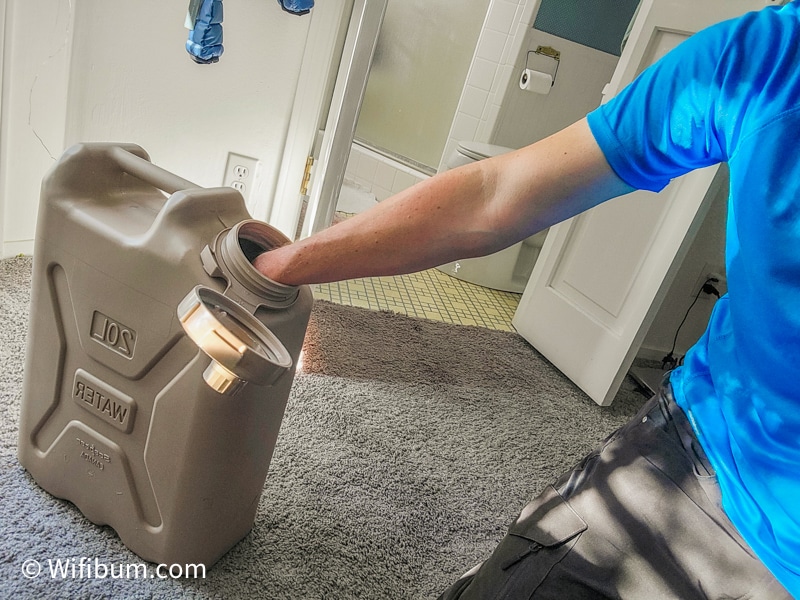
The cheaper Reliance Aqua-tainers are also popular, but I find them hard to clean and too fragile for my use.
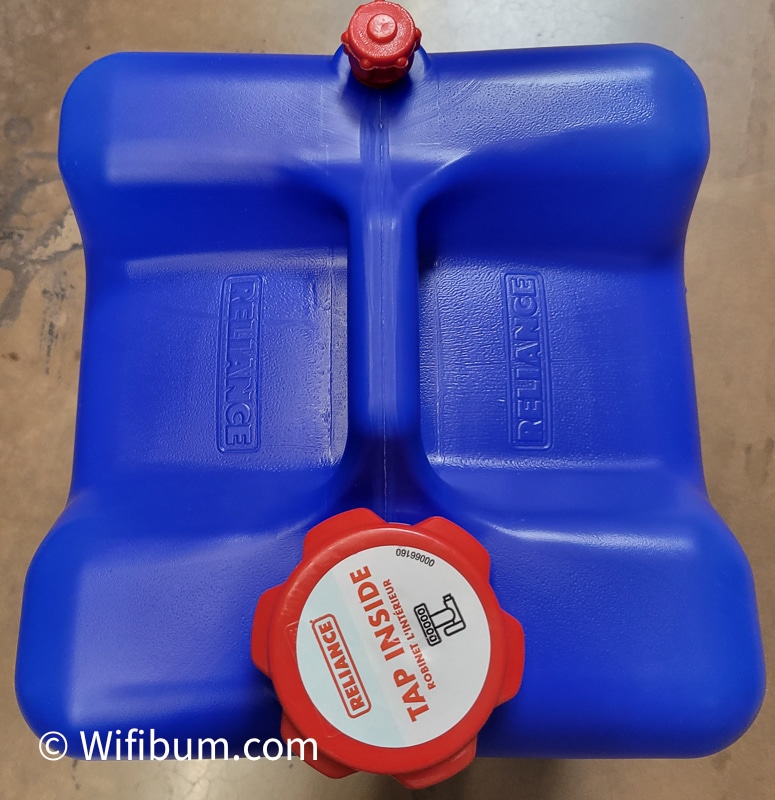
You can use a cheap or collapsible container if you’re going on short trips. You’ll want something more durable when you’re going into the backcountry and on longer trips.
My current solution for most trips is using two 5-gallon (20L) Scepter containers, two 3L bladders/hydration packs, and two Nalgene water bottles that are 2.5L total. (see my full review of the Scepter containers here).
It gives me a max capacity of 48.5L or just shy of 13 gallons.
This is enough water for 10 days without refilling depending on what I’m doing.
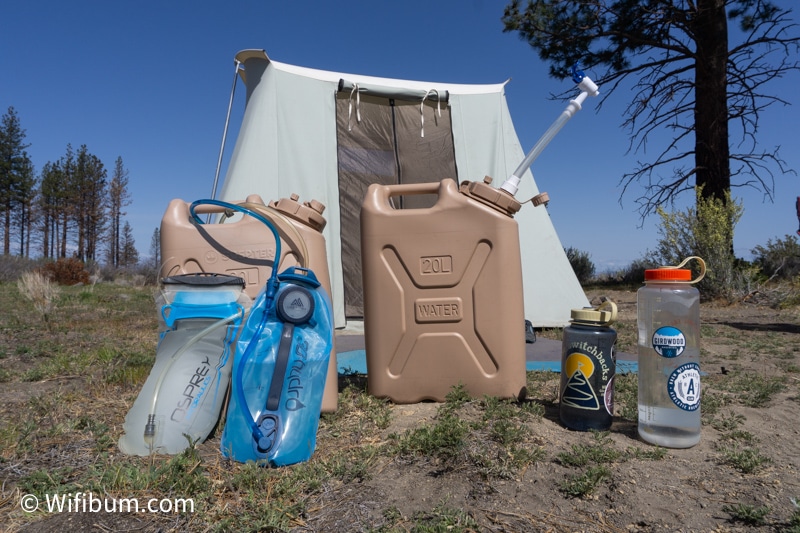
I will write this article from the point of view that you need anywhere between 1 and 15 gallons of water storage since that is my experience. (fun fact: 5 gallons of water weighs 42 lbs!)
The 4 Phases of Water Storage When Camping – Which Are You In?
If you’re like me, your camping water storage journey may have gone something like this:
Phase 1: You buy a case of plastic bottles from the store for a weekend trip with friends.
Phase 2: You buy reusable bottles to use. However, you still have to buy a few plastic water gallons from the grocery store as you’re heading out on your trip. The best water bottle is a simple Nalgene with a large opening for easy cleaning.
Phase 3: In this phase, you feel bad you bought the plastic gallons. So, you reuse them as much as you can by filling them at home, but inevitably you lose a cap, they take up too much space so you recycle them, or you get weirded out by it sitting in the sun for 3 months in your car.
Phase 4: You realize you are camping and going on road trips enough to finally set out on finding a more efficient and less wasteful solution.
Phase 4.5: You realize you are almost always providing extra water to others on larger group trips so you always carry more than necessary. (Read: How much water to bring camping).
I use two of these on most trips along with a few Nalgenes. It typically will last me up to 8 to 10 days for one person.
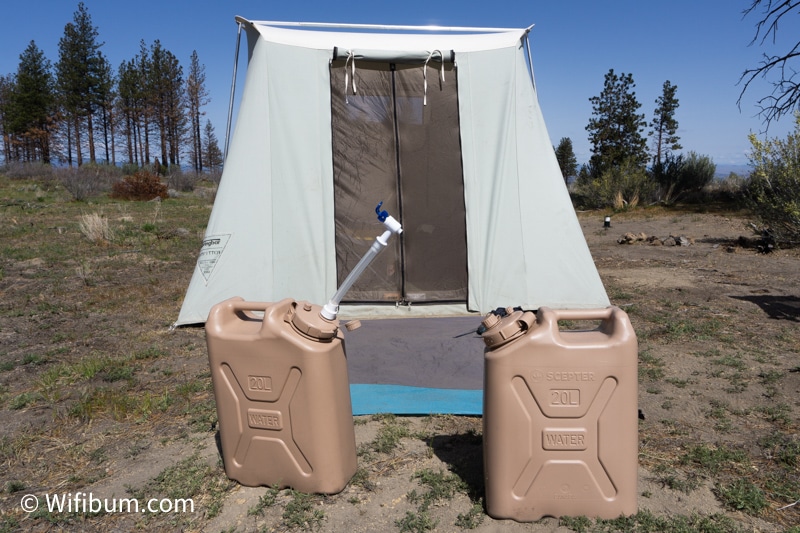
Which Phase are You In?
I think you’re in phase 1 or 2 when you’re occasionally joining your friends on trips and tagging along. These are the phases I experienced growing up since we only went on family camping trips a couple of times per summer.
You’re probably in phase 3 once you start planning and going on your own camping trips.
You probably enter Phase 4 when you’re spending one weekend or more per month camping or roadtripping.
With today’s environment and knowledge, I advocate for always carrying around a reusable water bottle for personal use and avoiding solutions that create one-time-use plastic waste.
My thoughts on phase 1 and phase 2 are simply from the reality of growing up and seeing family, friends, and myself use these methods. It’s preferred to have a permanent water bottle and limit waste whenever possible.
Durable Water Containers vs Collapsible Water Pouches vs Cheap Alternatives
Most water storage containers for camping can be categorized into Durable, Collapsible, or Cheap.
It’s also common to use a combination of these depending on your needs, so the best camping water containers will be up to your use case.
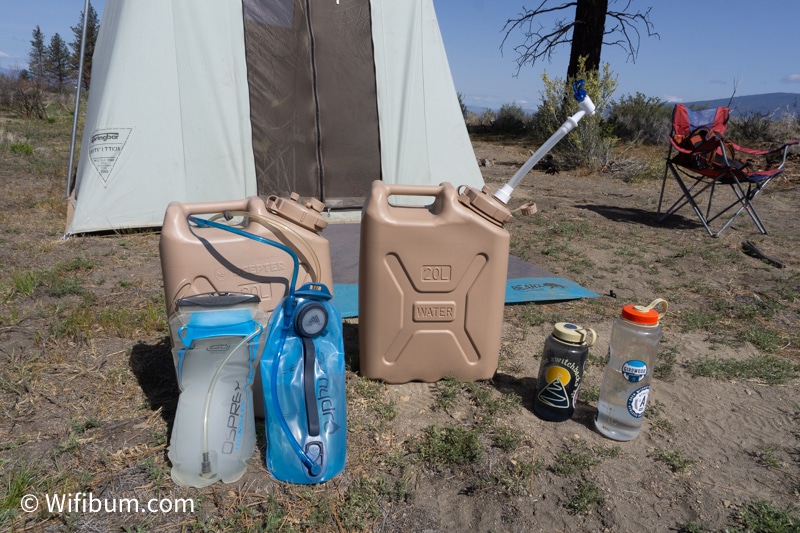
Based on my categories, you can probably understand the trade-offs between each type.
Durable Camping Water Containers
- Optimal for
- Frequent weekend campers and roadtrippers
- Longer trips (7 days+)
- Camping in more remote areas
- Larger quantities of water
- Easy to clean
- Cons
- The most expensive option
- Tend to be bulkier and rigid
- Leak risk if not standing straight up (the vent caps can leak when full)
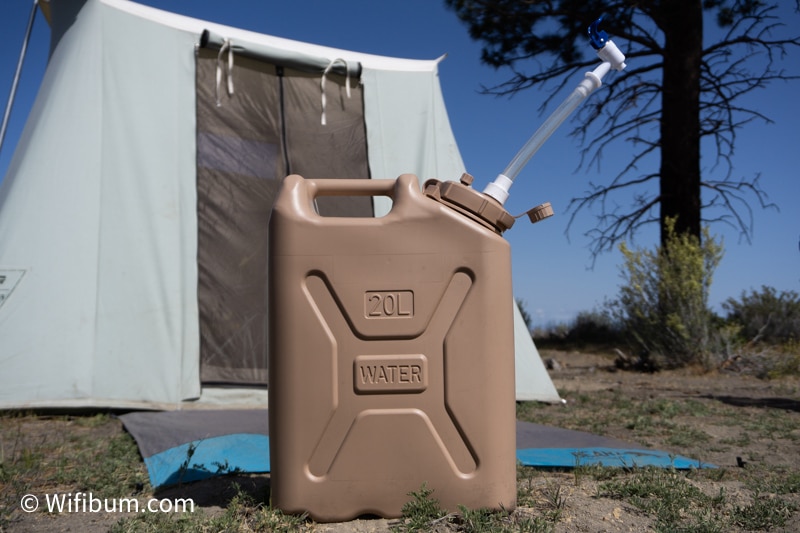
I use two of these on most trips along with a few Nalgenes. It typically will last me up to 8 to 10 days for one person.
Collapsible Camping Water Pouches
- Optimal for
- Campers with vehicles with less storage space – many tend to get several smaller containers that can be stored more strategically where space allows
- Car pooling trips where you can fill it up closer to the destination
- Trips in a singular location
- Shorter trips
- Cons
- Tend to hold smaller volumes and may need to purchase several
- Leak risk
- High puncture risk leading to soaked gear
- Hard to clean
The best collapsible water containers are the Water Storage Cubes.
These are fairly popular due to their price and usefulness. However, this review summarizes the issue: "The plastic is very thin and feels like I could puncture it with my bare hands. Fully expecting it to split down the seams when I'm filling it but so far so good."
Cheap Camping Water Alternatives
- Optimal for
- Your first camping trip
- Established campgrounds where you can refill your gallon
- Cons
- Likely will be one or few-time use plastic waste
- Potential leak risk (or losing the cap)
- Wasteful
I’m not going to sit on my high horse and judge because we’ve all been here. However, look at getting a Nalgene (Amazon link) or something similar as a first step!
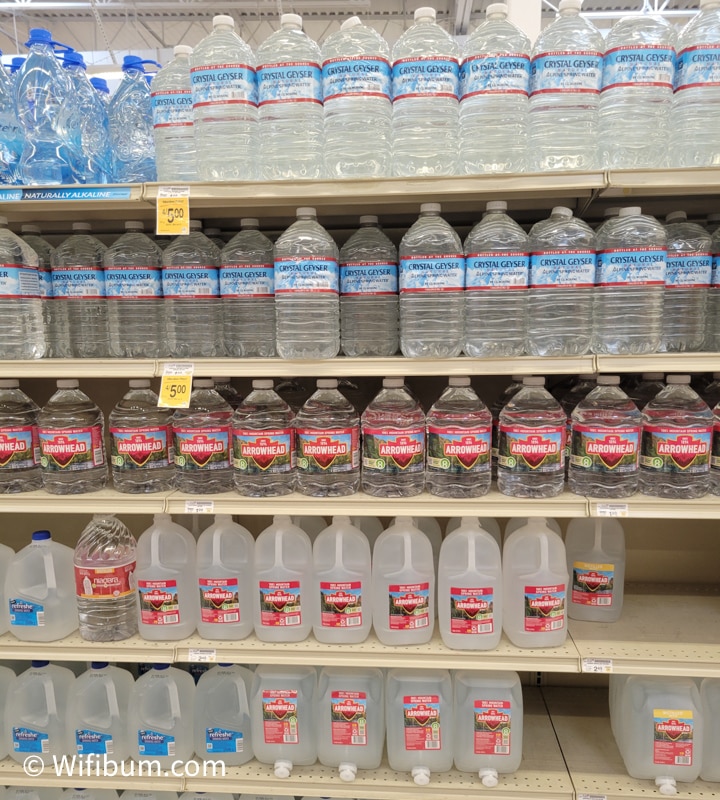
How to Bring Water for Your Camping Trip? A Quick Guide
These 5 questions will help you figure out the potential category you should be shopping:
How long will your trip be? – For longer trips, you may need a more durable solution. As things get shuffled around your vehicle, your water container will be more susceptible to damage and leaks.
What type of roads will you be driving? – If you’re camping in National Forest or other public lands, the dirt roads can vary dramatically.
When you’re camping in rough terrain, you’ll want a more durable water container. It will be bouncing around in your vehicle as you hit rocks and divots in the road.
If you’re like me, you may have random pieces of firewood and other debris in your car. Those are always a hazard to flimsy and cheaper water storage options.
Will you have easy access to water and how close to civilization will you be? – If you’re going to an established campground and have access to water or near gas stations, it’s a much easier decision to purchase a cheap or collapsible storage container for camping.
In the worst-case scenario of a puncture/leak, it is more of a minor inconvenience because the trip is salvageable without a bunch of extra driving.
How large is your vehicle? – If your vehicle is small, you’re more likely to be interested in a collapsible water container. These are great in situations where you’re trying to save spot and have access to water near your camp location.
How often do you go camping? – Let’s be real, the more often you go camping, the more likely you’re going to puncture a cheaper water container. It might even happen when you’re storing it in the basement or a box of other gear. The more often you go camping, the more durable you want your solution.
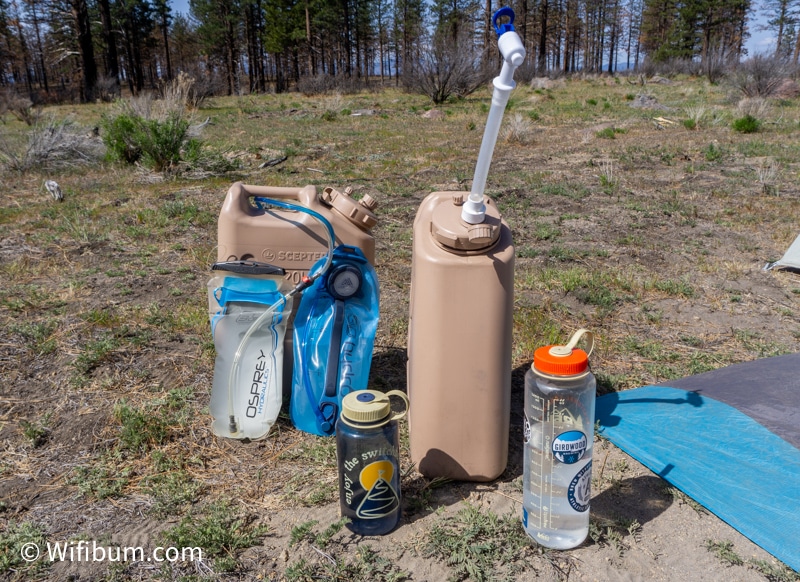
Conclusion: What’s the Best Water Storage System for Camping?
What’s the best water container for camping?
I’m going to have to go with the Scepter in either the 2.5 or 5-gallon option.
Why? In outdoor gear, I find myself more interested in quality than anything else. I’m pretty tough on my gear and I need it to last.
I use two of these on most trips along with a few Nalgenes. It typically will last me up to 8 to 10 days for one person.
For that reason, I go with the most durable water containers that should last many years compared to the alternatives.
So, instead of buying 3x cheaper options in 5 to 10 years, I hopefully only need 1 durable product such as the Scepter.
At the same time, it’s pretty common for people to have a combination of water solutions. The best thing you can do is start to actively think about it while you’re on trips and track your water consumption. Start paying attention to what your friends are using and ask them if they enjoy it.
Other Frequently Asked Questions
How Do You Clean Large Camping Water Containers?
One of the reasons I like the Scepter is how easy it is to clean.

I can fit most of my forearm into it to scrub the sides. Where I can’t reach, I will use a sponge with a handle.
For jugs that have a smaller opening, you may have to add soap to the water and vigorously shake it.
How to Get Rid of the Plastic Smell in Plastic Water Containers
I’ve bought 2 Scepters and both smelt horrid when I opened them after buying them. It smelt like chemicals.
With the first one, I took it to the bathtub and filled it and let it sit for a day. Then I scrubbed it with normal dish washing detergent, rinsed it out a few times, and it smelt like… nothing. It was perfect.
The second one I bought had a bit more of an issue removing.
I used the same method as above, but after letting it sit, it still smelt pretty bad.
After adding a couple tablespoons of baking soda into the water, shaking it, and letting it sit around, it got better.
I did one more baking soda bath, rinsed it out, and it was pretty good.
It’s unclear if it was in my head or not, but I think I could still taste some plastic-y taste only after I let the water sit in there for a few days. However, I let that water sit for about 3-4 days while I used the other one, I refilled both, and I no longer can tell the difference.
The water from both taste 100% fine.
You’ll see some reviews about the Scepter about this smell and taste. I would suggest trying a few methods and being patient. Don’t buy this the day before your trip, buy it a week or so before your trip and let some water sit in it, try some baking soda, and be patient.
To me, it’s similar to when I buy a Camelback bladder. I can always taste the plastic until a few washings and rinses.
